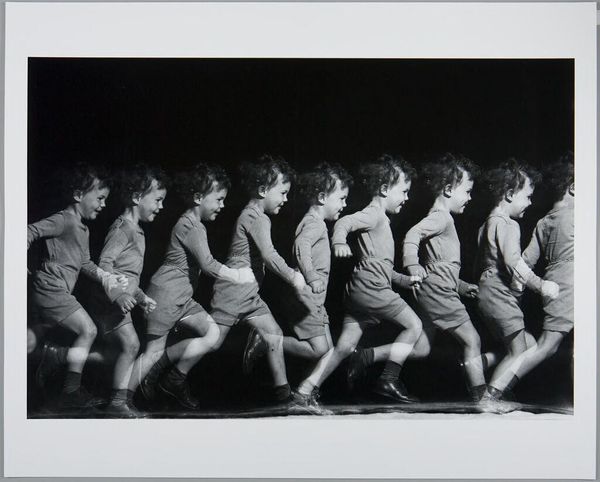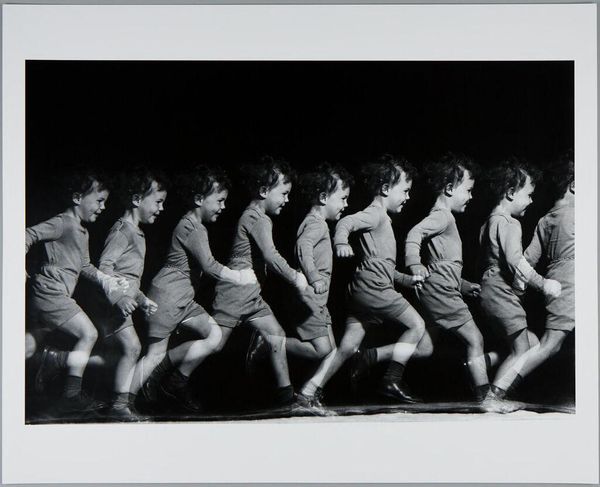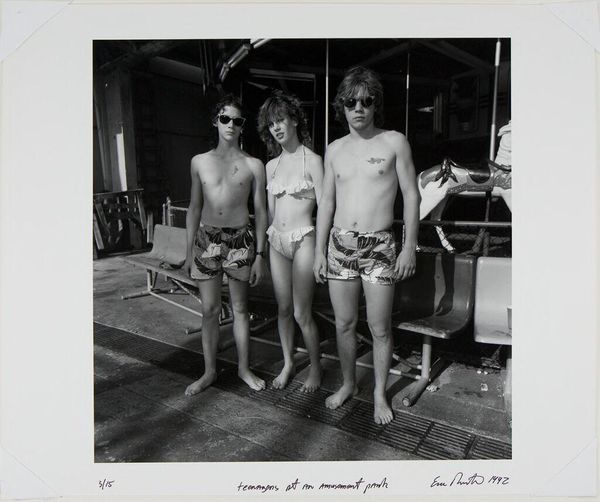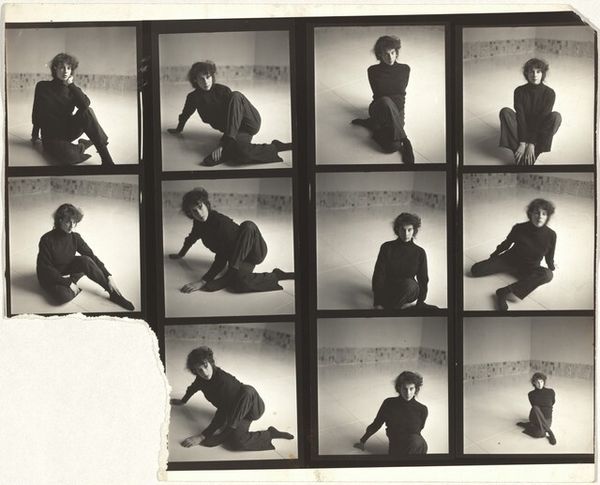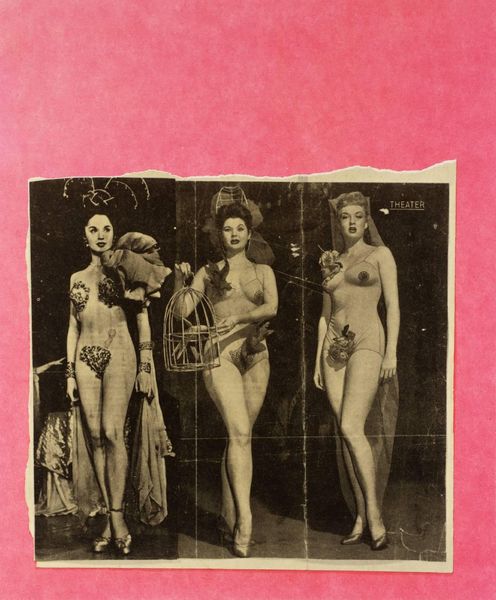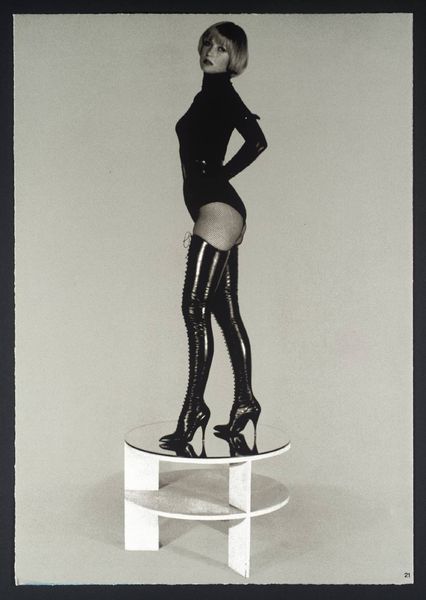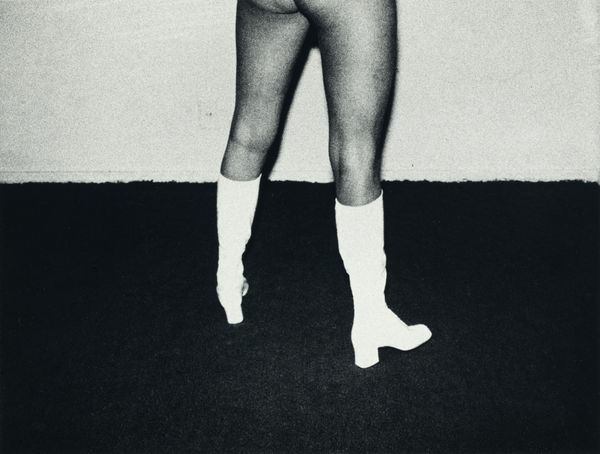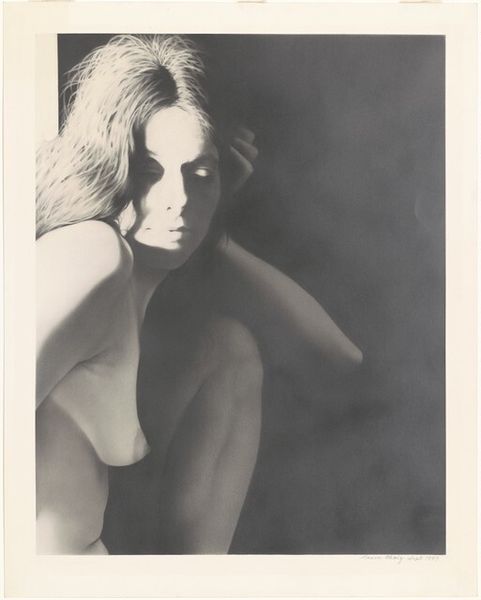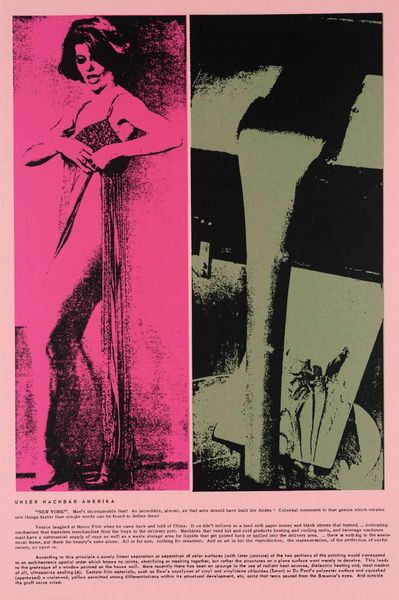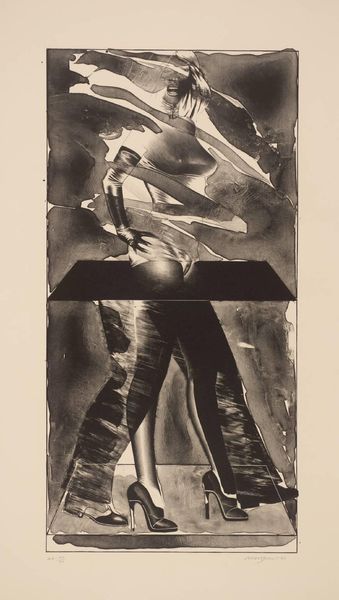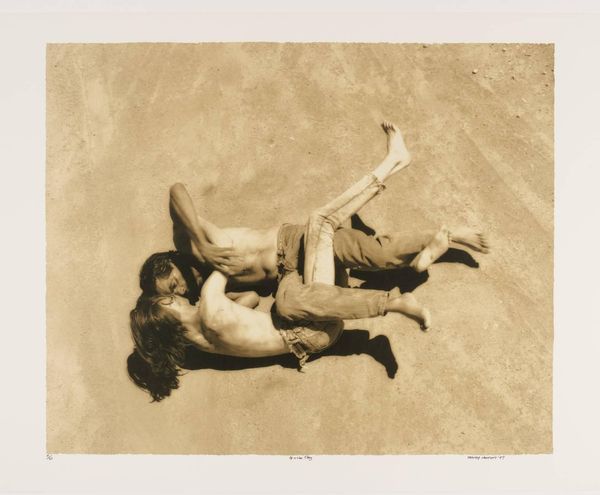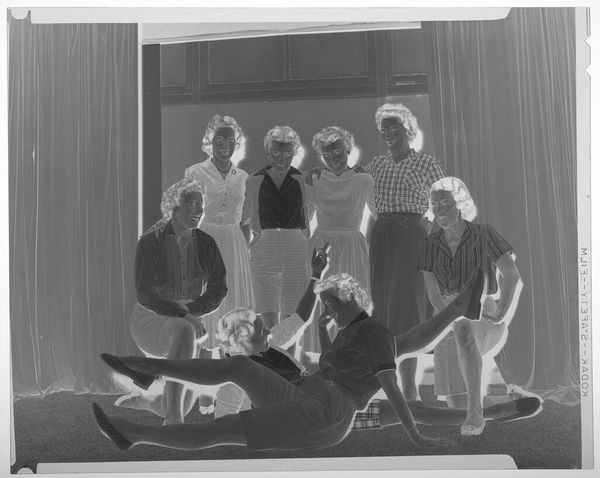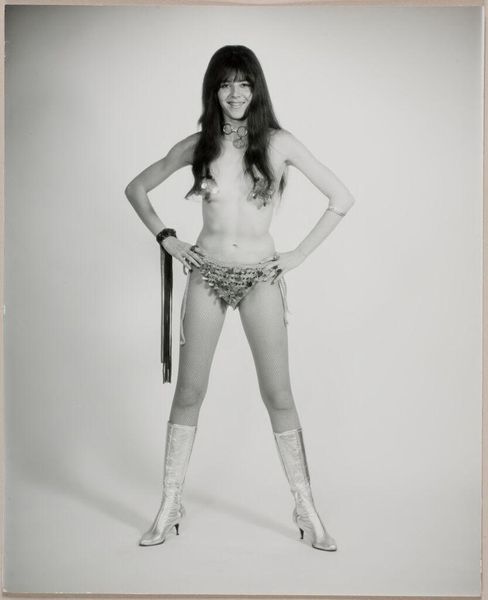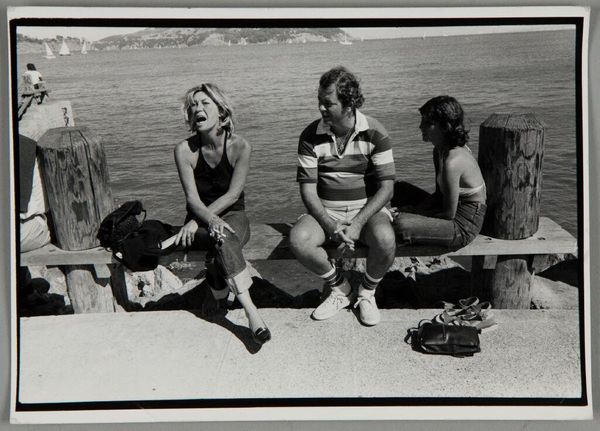
Dimensions: unconfirmed, each: 200 x 250 mm
Copyright: CC-BY-NC-ND 4.0 DEED, Photo: Tate
Editor: Here we have Richard Avedon's "Andy Warhol and Members of the Factory, 30 October 1969," held at the Tate. The black and white contrasts are so stark. It feels like a very raw, almost confrontational portrait. What's your take on it? Curator: Well, for starters, Avedon! What a master of intimacy. This isn't just a picture; it's a peepshow into the Factory's soul. The nudity, the artifice, the carefully constructed cool. It's like they're saying, "Here we are, world. Judge us, if you dare." Don't you think? Editor: That's a great way to put it. It’s a complex blend of vulnerability and defiance. Thank you. Curator: Anytime. These silver gelatin prints never fail to provoke an interesting conversation.
Comments
tate 3 months ago
⋮
http://www.tate.org.uk/art/artworks/avedon-andy-warhol-and-members-of-the-factory-30-october-1969-p13101
Join the conversation
Join millions of artists and users on Artera today and experience the ultimate creative platform.
tate 3 months ago
⋮
In 1969 Richard Avedon photographed the artist Andy Warhol and his entourage of aspiring actors and directors, testifying to ‘the dubious glory of the whole disreputable crew’ (Hamburger Kunsthalle 1999, p.287). Full frontal nudity, together with the inclusion of Candy Darling (a transsexual who appeared in Warhol’s films), signifies sexual daring and communicates the liberal and rebellious attitudes of the group. Warhol’s studio space, dubbed The Factory, drew the outrageous, the talented and the unconventional through its doors, and by the late 1960s had become ‘both site and symbol of the alternative culture’s disdain for the bourgeois ethic, from work to sex to control of consciousness – a sanctified space where leisure and pleasure reigned’ (Sally Banes, Greenwich Village 1963, Durham 1993, p.36).
